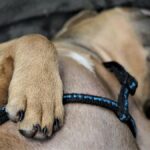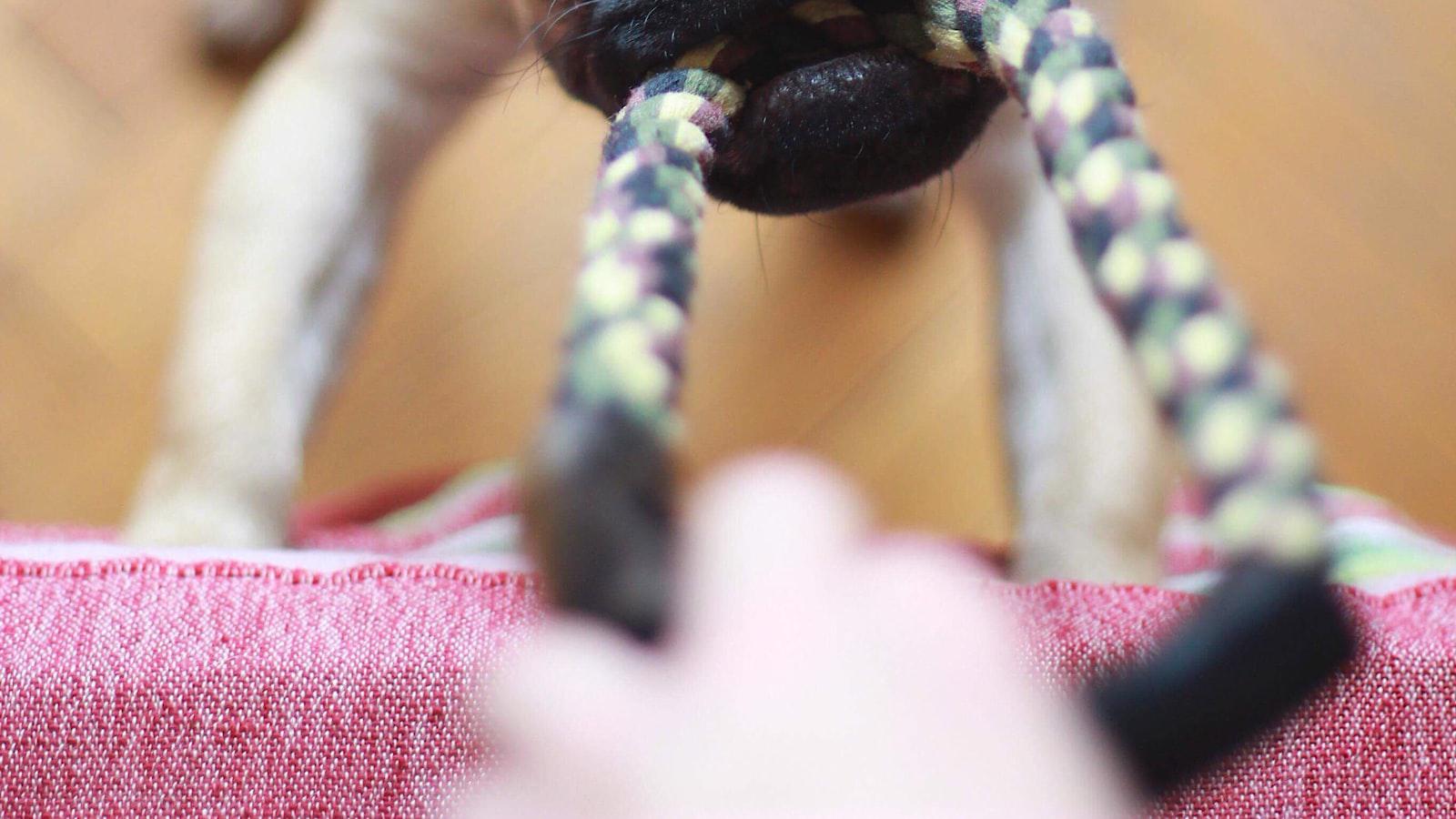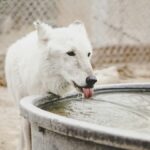Picture the scene: a peaceful afternoon at the park, the sun shining, people enjoying a leisurely stroll, and dogs frolicking together.
As your furry companion happily bounds towards a new friend, tails wagging in mutual excitement, an unexpected turmoil erupts.
Growls fill the air, teeth snap, and the once-harmonious atmosphere is shattered.
In that moment, you wonder, “Why do dogs attack my dog?”
This article will shed light on this common occurrence, examining the multifaceted nature of canine aggression.
While it’s crucial to remember that each dog is unique, and their individual experiences can shape their behavior, understanding the underlying motivations behind dog-on-dog aggression can help us better comprehend and manage these encounters.
Why Do Dogs Attack My Dog? And how can I Prevent My Dog from Attacking Others
It can be a scary and distressing experience when your beloved furry friend gets attacked by another dog.
There are several reasons why these unfortunate situations occur and understanding them can help you better protect your pup:
- Territoriality: Dogs are known to be protective of their territory, be it their home, backyard, or even their favorite park.When another dog enters their claimed space, they may feel threatened and resort to aggression as a means of defending what they perceive as rightfully theirs.
This territorial behavior can often arise from a lack of proper socialization or previous negative encounters with other dogs.
Socializing your dog from a young age can help reduce these territorial tendencies, as they become accustomed to different dogs and situations.
- Fear and anxiety: Just like humans, dogs can experience fear and anxiety in various situations, which may escalate into aggressive behavior.If a dog feels cornered or overwhelmed by a perceived threat, they may instinctively react by lashing out, which includes attacking other dogs.
Fearful past experiences, such as abuse or trauma, can exacerbate this behavior, so it’s crucial to provide a secure and loving environment for your dog.
This, together with gradual exposure to new dogs in a controlled setting, can help alleviate their fear and reduce the likelihood of hostile reactions.
- Lack of Socialization: One of the primary reasons dogs become aggressive towards other dogs is the lack of proper socialization during their early development stages.Just like humans, dogs need exposure to different environments, people, and dogs to learn appropriate social skills.
When dogs miss out on these experiences, they may become fearful, anxious, or reactive towards other canines.
As such, when your dog is young, you must always socialize them.
Introduce them to different people, animals, and environments in a controlled and positive manner.
This helps them become more confident and less likely to show aggressive behavior towards other dogs.
Socialization can be facilitated through puppy classes, dog parks, or supervised playdates with well-behaved dogs.
- Pack Dynamics: Dogs are pack animals by nature, and they have a natural instinct to establish a hierarchy within their social groups.Sometimes, dog-on-dog attacks occur due to dominance disputes.
When two dogs with strong personalities clash and compete for control, it can result in aggression.
Proper leadership and establishing clear rules and boundaries can help prevent these power struggles.
- Resource guarding: Dogs are known to guard valuable resources like food, toys, or even human attention.When they feel that another dog is encroaching on their prized possessions, they might resort to aggression as a defensive mechanism.
This behavior can be seen as an attempt to maintain control over limited resources and preserve their perceived status hierarchy within the pack.
Teaching your dog obedience commands like “drop it” and “leave it” can help prevent resource guarding behaviors and promote a harmonious living environment among multiple dogs.
Spotting Early Warning Signs: Dog Body Language and Aggression Triggers
We all want the best for our furry friends, so it can be disheartening and frightening to witness our beloved dogs engaging in aggressive behavior.
“Why do dogs attack my dog?” is a question that many dog owners find themselves asking.
To address this concern, it’s crucial to understand the early warning signs of aggression and how to spot them through dog body language.
- Pay close attention to your dog’s body posture: Dogs have a language of their own, and by observing their body language, we can often determine their intentions.Look out for signs such as a stiff tail held high, raised hair on their back or neck, and a tense, rigid body.These can be indicators that your dog is feeling anxious or on edge.
- Recognize triggers that lead to aggression: Aggression in dogs can be triggered by various factors.Some common triggers include resource guarding (protecting food or toys), fear or anxiety, territorial behavior, or even pain or illness.Understanding what triggers your dog’s aggression can help you avoid situations that may set them off and address the underlying issues appropriately.
- Seek professional guidance: If you find that your dog’s aggression is becoming a recurring issue or if you’re unsure how to handle it, seeking the assistance of a professional dog behaviorist or trainer is highly recommended.They can assess your dog’s behavior, provide tailored advice, and offer strategies to manage and modify their aggression.
Remember that dogs, like humans, can display different behavioral patterns and alert us through their body language.
By closely observing their cues and understanding their triggers, we can minimize the chances of our dogs engaging in aggressive behavior.
And always keep your dog properly leashed and supervised, especially in public places or around unfamiliar dogs.
This will not only ensure the safety of your own dog but also shows respect for other pet owners in your community.
Steps to Take After a Dog Attack: First Aid, Reporting, and Seek Professional Help
It can be harrowing to witness your dog getting attacked by another dog.
In that situation, it is important that prioritize your pooch’s safety over the why.
The safety and well-being of your furry friend are of utmost importance, so let’s take immediate action!
First things first, after a dog attack, it’s vital to administer first aid to your poor pooch.
Carefully examine your dog for any signs of injuries such as cuts, puncture wounds, or bruises.
Clean any wounds with mild soap and warm water.
If the injuries are severe or you’re unsure about the extent of the damage, it’s essential to consult a veterinarian as soon as possible.
Once your dog’s immediate well-being is addressed, it’s crucial to report the incident.
Report the attack to your local animal control or relevant authorities.
Provide them with a detailed description of the incident, including the location, time, and any identifying information about the aggressor dog and its owner, if possible.
By reporting the attack, you help ensure the safety of others in your community and possibly prevent future incidents.
FAQ
Q: What causes dogs to attack other dogs?
A: Well, my friend, there could be several reasons behind a dog attacking another pooch.
One common trigger is territoriality.
Dogs, just like us humans, have their own personal space that they want to protect. If they feel like their territory is being invaded, they might go on the offensive to defend it.
Q: So, is it all about protecting their turf?
A: Not necessarily! Dogs can also become aggressive due to fear or anxiety.
Think about it – when people feel scared, they might lash out as a defense mechanism.
Similarly, dogs may resort to aggression when they feel threatened or frightened by another dog’s presence.
Q: Are some breeds more prone to attacking other dogs?
A: That’s a good question! While it might seem like certain breeds have a reputation for being more aggressive, it’s important to remember that aggressive behavior is not limited to any particular breed.
It all comes down to individual personalities and upbringing.
A well-socialized and properly trained dog, regardless of breed, is less likely to attack others.
Q: Can a dog’s past experiences contribute to their aggression?
A: Absolutely! Just like humans, dogs can carry emotional baggage from past experiences.
If a dog has been mistreated or had negative encounters with other dogs in the past, it can become a trigger for aggression.
Traumatic events can shape their behavior and, unfortunately, lead to attacking other dogs.
Q: Is there anything I can do to prevent these attacks from happening?
A: Definitely! The first step is to ensure your own dog is well-behaved and obedient.
Socializing your pooch from an early age and training them with positive reinforcement can work wonders in preventing aggressive behavior.
Also, be mindful of your dog’s body language and avoid situations that could trigger their anxiety or territorial instincts.
Q: How can I handle an attack if it does occur?
A: Stay calm! It’s easier said than done but try not to panic. Shouting and making sudden movements might escalate the situation further.
Instead, focus on keeping yourself and your dog out of harm’s way.
Using a firm and authoritative voice, command the attacking dog to go away, or ask for help from nearby people.
Remember, your safety and your dog’s safety are top priorities.
Q: Should I report the attack?
A: Absolutely! Reporting any dog attacks you witness, or experience is crucial for the safety of the entire community.
Contact your local animal control or non-emergency police line to let them know about the incident.
It helps authorities keep track of aggressive dogs and may prevent similar incidents in the future.
Q: Can dogs ever overcome their aggressive tendencies?
A: With patience, training, and proper guidance, dogs can absolutely learn to overcome their aggressive tendencies.
Seeking advice from professional dog trainers and behaviorists is a great step toward helping your furry friend become more peaceful and sociable.
Remember, every dog’s behavior is unique, and it’s important to treat them with understanding and empathy.
By being a responsible pet parent and taking the necessary precautions, you can significantly reduce the chances of your dog being attacked and foster a harmonious canine community.
Closing Remarks
Watching your dog get attacked by another is undoubtedly a distressing situation that no dog owner wants to find themselves in, but hopefully, this article has shed some light on the possible reasons behind this behavior.
Dogs are complex creatures with their own unique personalities, just like us humans.
Thus, it’s crucial to approach encounters with caution and understanding, both for the safety of your own pooch and the peace of mind of others.
If you happen to find yourself in a situation where a dog is aggressively approaching your pet, it’s important to remain calm and try your best to defuse the situation.
Patience, consistency, and positive reinforcement training techniques are vital when addressing aggressive behavior.
And always consult a professional dog trainer or behaviorist for personalized advice to ensure the safety and happiness of your beloved pet.
It is equally important that we avoid assigning blame or making assumptions.
It’s not constructive to label every dog that attacks as “aggressive” or every dog owner as negligent.
Instead, we should focus on education and prevention.
As responsible dog owners, it is our duty to ensure that our beloved companions are properly trained, adequately socialized, and always under our control.
By doing so, we can greatly reduce the likelihood of attacks and help create a safer environment for all dogs and their owners.
Remember, a little empathy goes a long way.












